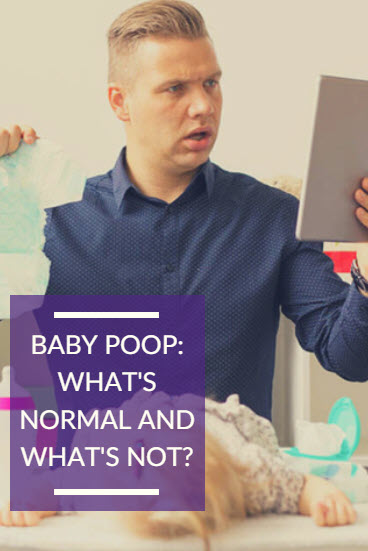At Neocate, we get a lot of dirty questions from new parents starting on Neocate products. By messy, we mean questions about dirty diapers and baby poop.
In this post, we’ll walk you through some of the most common questions related to what’s in your little one’s diapers – poop, bowel movements, poo, stool. We will tackle the issues that you might be too shy to ask. What is a normal baby poop? What color should poop be? Will baby poop change after starting Neocate? We’ll also go over the reasons you see what you see because new parents ask why.
If we don’t answer your question in this blog post, don’t hesitate to comment below. Remember: we’re Neocate experts: we can’t give medical advice, and we can’t answer questions about your little one’s medical care. Please contact your healthcare team for these types of issues.
WHAT IS NORMAL WHEN IT COMES TO BABY POOP?
Parents pay close attention to their newborn’s stool. Anything that seems unusual can cause a lot of anxiety. So, what exactly is “normal” when it comes to stools? No one answer fits everyone. What’s normal for one baby may not be healthy for another.
Watch for sudden changes in your baby’s bowel habits. Remember, occasional changes are healthy, especially when a baby starts solid foods. Also, when babies first start on an amino acid-based hypoallergenic formula like Neocate, it may take up to 2-3 weeks for their gut to adjust and to find their “new normal.”
Color, consistency, and frequency of bowel movements can differ. The type of feeding, either breastfeed or formula, as well as the mother’s diet matter as well. Below are some general guidelines to help you with your diaper content-related expectations.
WHAT COLOR AND CONSISTENCY SHOULD BABY POOP BE?

-
Breastfed babies
An exclusively breastfed baby’s poop will be a light mustard yellow color and may have seed-like specks. The consistency of these stools can range from loose and runny to very soft. -
Formula-fed babies
A baby consuming standard (milk or soy-based) infant formula has stools that are often tan or yellow. A formula-fed baby tends to have firmer stools than a breastfed baby, similar to a peanut butter consistency. -
Neocate Syneo Infant babies
Babies on Neocate Syneo Infant often have stools that are soft, similar to those of breastfed infants. The color may be close to light mustard color, again similar to breastfed babies’ stools. -
Babies on other hypoallergenic formulas
Stools may be green and are often pretty dark green. Consistency of these stools is often pasty (think peanut butter), sometimes loose and watery, or occasionally formed and hard.
With most hypoallergenic formulas, like Neocate Infant, the stool color (green) and consistency (pasty) are due to the way children absorb and digest formula. Keep in mind, in such formulas the protein is very broken down and simple to absorb, and they don’t contain fiber. Read more about green baby poop.
However, with Neocate Syneo Infant, stool color and consistency can be different, more like those of breastfed babies. That’s because Neocate Syneo contains inspired by breast milk and is the only one in the market with prebiotics and probiotics.
Important to remember: Regardless of whether your baby drinks breast milk or formula, blood in the stool is NOT typical. If you see red in the diaper or the stool looks black, always let the doctor know. These stools can be a sign of a food allergy.
It may be normal to spot mucus, which looks like what comes out of your nose and is sticky. A lot of mucus in the diaper for an extended period, it can signal a food allergy. If this occurs, please contact your doctor.
Quick poop reference guide:
- Brown: Perfectly Normal.
- Green: More common if you are on an amino acid-based formula, like Neocate Infant.
- Orange or Yellow: These colors are most common when breastfeeding, feeding Neocate Syneo Infant or once you start introducing baby foods like those colorful strained carrots.
- White: Call the doctor to be safe. The chalky color could indicate a lack of bile from the liver to digest food, and in that case, you must address it.
- Black: Consult the doctor. Tarry, black poop may be a sign of blood in the stool that has turned dark black moving through the gut. A bloody stool can signal a variety of allergic or digestive conditions, including milk protein allergy.
- Red: Consult a doctor to be safe. Reddish poop could come from a colorful last meal if you’ve just started baby food (think beets). But bright red blood in the poop can also come from blood.
HOW OFTEN SHOULD A BABY POOP?
The frequency of baby poop can vary. Some newborn babies may have a bowel movement after each feeding. Others may only go once a day or even once every two days. During the first weeks of life, until you learn your baby’s bowel habits, common advice is to call the doctor if your baby goes three or more days without a bowel movement.
Let’s dive a bit into the frequency of baby poop based on what they eat:
- Breastfed babies: Breastfed babies usually poop a lot before they reach the one-month mark. After the first month, breastfed babies often have fewer bowel movements than before. On average ranging 3-4 times per day.
- Formula-fed babies: Formula-fed babies typically have one or more bowel movements a day.
- Neocate Syneo Infant babies: If your baby takes Neocate Syneo Infant, stools may be less frequent than for breastfed babies. Maybe once a day or even a little less frequent.
- Babies on other hypoallergenic formulas: It’s normal for bowel movements to decrease in frequency if you switch to one of these formulas without prebiotics.
Regardless of whether your baby drinks breast milk or formula, as long as the baby is healthy and growing, infrequent stools aren’t a cause for concern. If the baby seems to have trouble passing them though, call the doctor.
DOES NEOCATE CAUSE DIARRHEA?
The body digests and absorbs hypoallergenic formulas like Neocate differently than standard formulas. That can mean a difference in stool consistency and may result in looser stools for the first few days as the body adjusts to Neocate.
Most experts suggest that it can take about two weeks to adjust to a new formula to find your “new normal.” This adjustment allows enough time to see most of the benefits of Neocate on signs and symptoms of food allergies.
Keep in mind that at times, newborn’s stools may be soft and slightly runny, making it difficult to tell if they have diarrhea. Look for a significant increase in frequency or an extremely liquid bowel movement. Diarrhea can cause dehydration, so call the doctor at the first sign of it.
DOES NEOCATE CAUSE CONSTIPATION?
 Many parents get concerned when they don’t see a bowel movement in a day or two after starting Neocate. However, that’s not unusual for infants on hypoallergenic amino acid-based formulas.
Many parents get concerned when they don’t see a bowel movement in a day or two after starting Neocate. However, that’s not unusual for infants on hypoallergenic amino acid-based formulas.
With most hypoallergenic amino acid-based formulas, like Neocate Infant, babies poop less often due to the way they absorb formulas. The protein in such formulas is broken down and simple to absorb, and they don’t contain fiber.
However, with Neocate Syneo Infant, babies may have stools more often than with other hypoallergenic formulas, more like breastfed babies. Neocate Syneo contains prebiotics and probiotics.
Hard or dry stools that are difficult to pass may indicate constipation. Some parents tell us that their little one seems to be straining, trying to have a bowel movement.
If your little one looks uncomfortable, it’s best to check with her healthcare team. Sometimes the solution is as simple as providing additional fluids. Other times, the doctor will look at different ways to make it easier for your baby to pass bowel movements.
HOW MANY DIAPERS SHOULD I BE CHANGING A DAY?
The answer to this question is related to the question above about constipation. First, you’re still going to have to change diapers that are wet with no bowel movement. Some parents say, they may change fewer dirty diapers, and most diapers they change are just wet from urine.
If your little one hasn’t started solids yet, you might notice him start to have more dirty diapers when you start to add solid foods into his diet.
THAT’S IT!

Just kidding. We’d love to say that these are all the questions we get about Neocate and diapers, but we’ve only scratched the surface – we could write loads on this topic! If you don’t find your answer here, please ask your question below. That way, other parents who are just as curious can see the answer. Tell us, what else do you want to know about Neocate dirty diapers?
 Rob McCandlish is a registered dietitian nutritionist (RDN) who joined the Nutricia team in 2010. Rob has years of experience at Nutricia following food allergy research, working with Neocate products, talking with Neocate families, and learning about the science behind Neocate and food allergies. He has two nephews who both used Neocate for their cow milk allergies!
Rob McCandlish is a registered dietitian nutritionist (RDN) who joined the Nutricia team in 2010. Rob has years of experience at Nutricia following food allergy research, working with Neocate products, talking with Neocate families, and learning about the science behind Neocate and food allergies. He has two nephews who both used Neocate for their cow milk allergies!
Breast milk is the best milk for infants. It’s the first choice of the World Health Organization (WHO) and health care professionals around the world. If your child is allergic, breastfeeding could be difficult, and you may need support.






